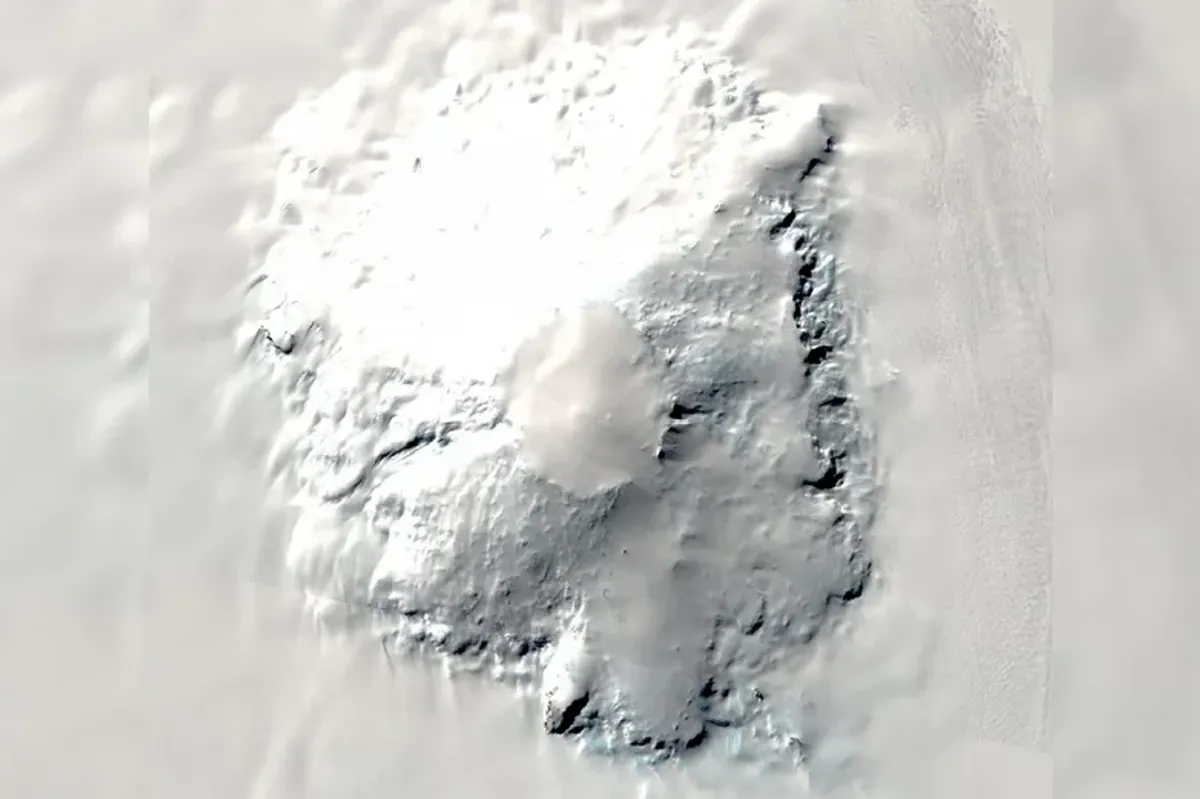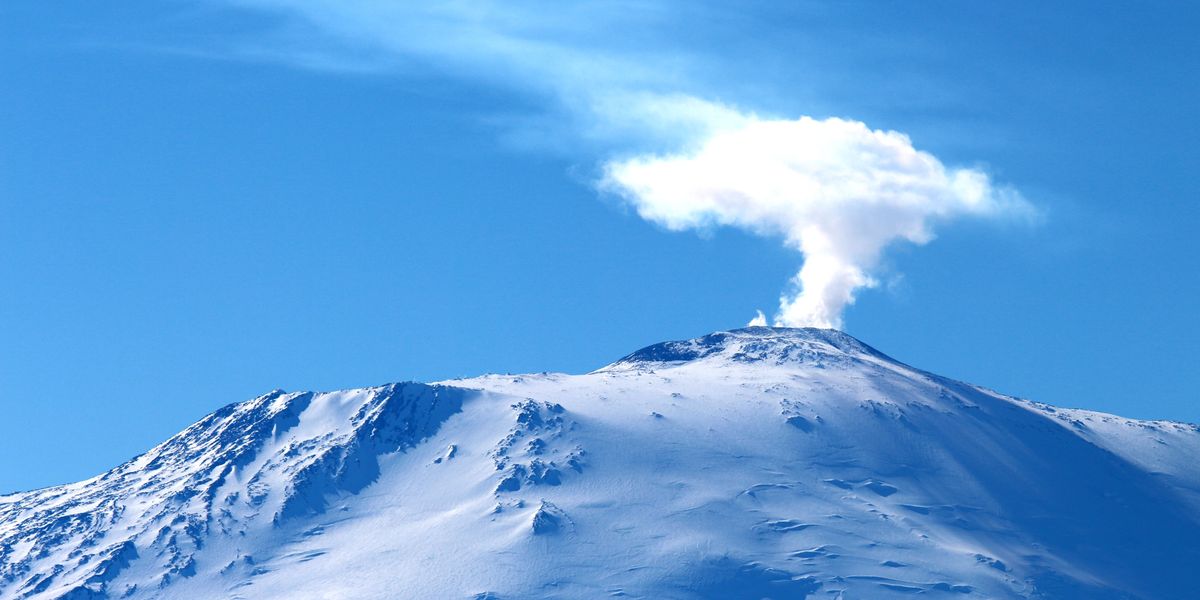The frozen continent of Antarctica is, paradoxically, a hotbed of volcanic activity.
The ice-capped region is home to some 138 volcanoes nestled beneath the snow, 91 of which were discovered as recently as 2017.
Whilst most of them are considered dormant or possibly extinct, three have erupted in recent history according to the Smithsonian Institution’s Global Volcanism Program: Penguin Island in 1905; Deception Island in 1970, and Mount Erebus in 1972.
The latter of these is arguably Antarctica’s most famous – winning the titles of tallest active volcano on the continent – with its summit standing at 12,448 feet (3,794 metres) – and the southernmost active volcano on Earth.
Satellite images of this behemoth reveal a hot lava lake that’s been bubbling in its summit crater for the past 32 years.
It has been continuously erupting since “at least 1972,” Conor Bacon, a postdoctoral researcher in volcano seismology at the University of Cambridge, told Live Science.
Since then, it has been known to “emit plumes of gas and steam” and occasionally hurl out rock “bombs,” which collectively are known as “strombolian eruptions”, according to NASA’s Earth Observatory.
Mount Erebus has been continuously erupting since 1972 (Josh Landis/National Science Foundation)
But most extraordinarily of all, these gusts of volcanic gas are worth their weight in gold – almost literally.
This is because they are loaded with tiny specks of gold – measuring no larger than 20 micrometres, IFL Sciencereports.
Still, while this amount may seem minuscule, over the course of a single day, scientists estimate that the volcano churns out around 80g (2.8 ounces) of the precious metal, which is worth more than £4,800 ($6,000).
And as you would expect of dust on the wind, the gold doesn’t simply stay on Mount Erebus.
Rather, traces of it have been detected 1,000km (621 miles) from the volcano after it travelled through the air.
Still, Antarctic volcanoes aren’t all known for their glittering belches, and the questions many experts are still trying to answer are: could they erupt one day? And what would happen if they did?
Researchers acknowledge that it is hard to predict whether any of the 138 on the continent is a ticking time bomb.
This is largely thanks to logistical and climatic challenges posed by the region’s unforgiving habitat.
For starters, the volcanoes are much harder to access than those in other parts of the world, plus, all monitoring instruments “need to be rugged enough to survive the harsh conditions and long polar nights,” Bacon stressed in his interview with Live Science.
So what would happen if one or more of these volcanoes were to erupt?
We can find clues by peering back in time nearly 20,000 years.
 A landsat image of Mount Takahe which erupted some 18,000 years ago, leaving a whole in the ozone layer(Landsat Image Mosaic of Antarctica (LIMA). USGS and NASA, LIMA)
A landsat image of Mount Takahe which erupted some 18,000 years ago, leaving a whole in the ozone layer(Landsat Image Mosaic of Antarctica (LIMA). USGS and NASA, LIMA)
One of the continent’s volcanoes, Mount Takahe, sits near the remote centre of the West Antarctic Ice Sheet.
In a 2017 study, published in the journal PNAS, scientists posited that Takahe was responsible for a series of eruptions rich in ozone-consuming halogens that occurred about 18,000 years ago.
They claimed that these eruptions triggered an ancient hole in the ozone layer and warmed the southern hemisphere.
This caused glaciers to melt and helped bring the last ice age to an end, John Smellie, Professor of Volcanology at the University of Leicester, explained in a piece for Newsweek.
Still, Prof Smellie conceded that for this sort of environmental impact to happen again, it would require a series of eruptions, similarly enriched in halogens, “from one or more volcanoes that are currently exposed above the ice.”
“Such a scenario is unlikely although, as the Takahe study shows, not impossible,” he wrote.
“More likely is that one or more of the many subglacial volcanoes, some of which are known to be active, will erupt at some unknown time in the future.”
And, sadly, it’s pretty safe to assume that they won’t explode with a friendly shower of gold dust.
Sign up for our free Indy100 weekly newsletter
Have your say in our news democracy. Click the upvote icon at the top of the page to help raise this article through the indy100 rankings

Dr. Thomas Hughes is a UK-based scientist and science communicator who makes complex topics accessible to readers. His articles explore breakthroughs in various scientific disciplines, from space exploration to cutting-edge research.








